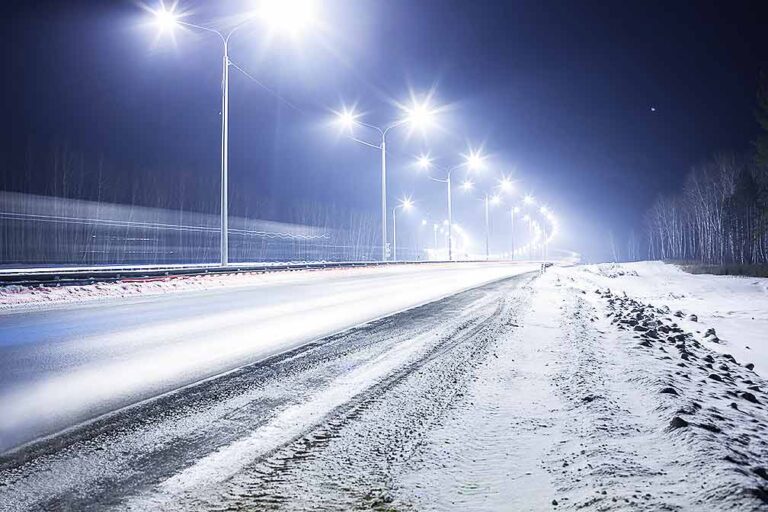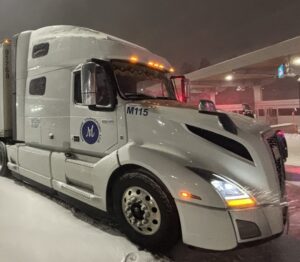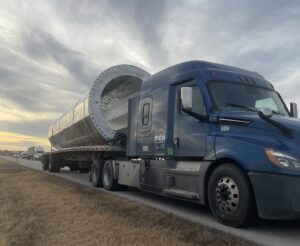HARRISBURG, Pa. – The Pennsylvania Department of Transportation is implementing vehicle restrictions on several Pennsylvania roadways starting at 5 p.m. Thursday. Additionally, PennDOT advises motorists to avoid unnecessary travel in affected areas during the storm.
Restrictions will be communicated via variable message boards, the 511PA traveler information website and smartphone apps. Motorists can also sign up for personalized alerts on the website.
Effective at 7 p.m. tonight, vehicle restrictions are planned for the following roadways at Tier 1 of the commonwealth’s weather event vehicle restriction plan (PDF):
- PA Turnpike I-76 (Mainline) from New Stanton (Exit 75) to Breezewood (Exit 161)
- The entire length of Interstate 99
Effective at 10 p. m. tonight vehicle restrictions are planned for the following roadways at Tier 1 of the commonwealth’s weather event vehicle restriction plan (PDF):
- I-80 from I-99 to the Ohio border
- I-79 from I-80 to I-90
Effective at midnight, vehicle restrictions are planned for the following roadways at Tier 1 of the commonwealth’s weather event vehicle restriction plan (PDF):
- U.S. 22 from I-78 to the New Jersey border
- The entire length of I-78
- I-80 from I-99 to the New Jersey border
- I-81 from I-78 to the New York border
- The entire length of I-84
- The entire length of I-180
- The entire length of I-380
- The entire length of Route 33
PennDOT urges motorists to avoid travel if possible.
If travel is necessary, use caution, reduce speeds and be aware of changing weather conditions.
PennDOT will pre-treat roadways where necessary ahead of the storm to help prevent ice from forming a bond with the pavement during the early stages of a storm. However, salt is not a silver bullet, and drivers may encounter icy spots on the roadway. With freezing temperatures, roads that look wet may actually be icy, and extra caution is needed when approaching bridges and highway ramps where ice can form without warning.
To help make decisions regarding winter travel, motorists are encouraged to “Know Before You Go” by checking conditions on more than 40,000 roadway miles, including color-coded winter conditions on 2,900 miles, by visiting www.511PA.com. 511PA, which is free and available 24 hours a day, provides traffic delay warnings, weather forecasts, traffic speed information and access to more than 1,000 traffic cameras. Users can also see plow truck statuses and travel alerts along a specific route using the “Check My Route” tool.
511PA is also available through a smartphone application for iPhone and Android devices, by calling 5-1-1, or by following regional Twitter alerts.
Drivers should prepare or restock their emergency kits with items such as non-perishable food, water, first-aid supplies, warm clothes, a blanket, cell phone charger and a small snow shovel. Motorists should tailor their kits to any specific needs that they or their families have such as baby supplies, extra medication and pet supplies.
When winter weather occurs, drivers should extra cautious around operating snow-removal equipment. When encountering a plow truck, drivers should:
- Stay at least six car lengths behind an operating plow truck and remember that the main plow is wider than the truck.
- Be alert since plow trucks generally travel much more slowly than other traffic.
- When a plow truck is traveling toward you, move as far away from the center of the road as is safely possible, and remember that snow can obscure the actual snowplow width.
- Never try to pass or get between several trucks plowing side by side in a “plow train.” The weight of the snow thrown from the plow can quickly cause smaller vehicles to lose control, creating a hazard for nearby vehicles.
- Never travel next to a plow truck since there are blind spots where the operator can’t see, and they can occasionally be moved sideways when hitting drifts or heavy snowpack.
- Keep your lights on to help the operator better see your vehicle. Also remember that under Pennsylvania state law, vehicle lights must be on every time a vehicle’s wipers are on due to inclement weather.
Last winter in Pennsylvania, preliminary data shows that there were 301 crashes resulting in four fatalities and 143 injuries on snowy, slushy or ice-covered roadways where aggressive driving behaviors such as speeding or making careless lane changes were factors.
For more information on safe winter travel, an emergency kit checklist and information on PennDOT’s winter operations including a video, visit www.PennDOT.gov/winter. Additional winter driving and other highway safety information is available at www.PennDOT.gov/safety.
The Trucker News Staff produces engaging content for not only TheTrucker.com, but also The Trucker Newspaper, which has been serving the trucking industry for more than 30 years. With a focus on drivers, the Trucker News Staff aims to provide relevant, objective content pertaining to the trucking segment of the transportation industry. The Trucker News Staff is based in Little Rock, Arkansas.















